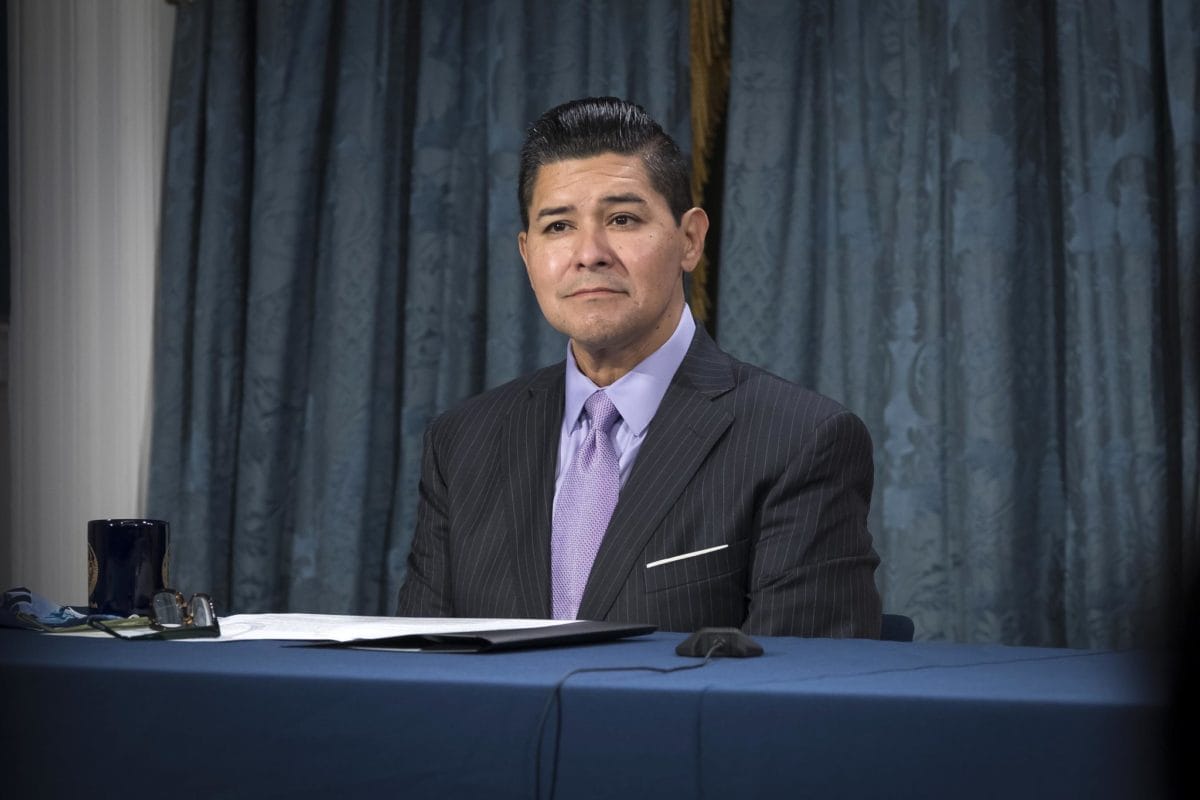Question Of The Day: Why Can’t Remote School Start On Sept. 10?


Yesterday’s big announcement was that public school reopening is to be delayed from September 10 to September 16 for remote, and September 21 for blended cohorts, to allow for school buildings to be ready and staff trained in all the new protocols. All this in the name of reopening schools in person rather than online, when remote instruction arguably could have been begun on September 10 as good it was (and hopefully better than it was) back in the Spring.
This morning Chalkbeat’s education reporter Christina Veiga asked Mayor Bill de Blasio and Chancellor Richard Carranza about it. Here’s how that went.
Question: Lots of people have called on the City to build a solid remote learning infrastructure because we know that most instruction is going to happen remotely, even if and when buildings reopen. So, why wasn’t the City immediately prepared to start with all remote learning on September 10th instead of delaying the school year? What specific things have been done to make remote learning better?
Mayor Bill de Blasio: Okay. I would say, first of all, it’s not if or when it’s, when. We’ve made very, very clear that on a transitional basis, the first few days of remote instruction will start on September 16th and then in-person learning will start on September 21st. We’re moving forward with that period. There’s just no if to that, it’s just very, very clear and it’s happening now.
The work that was done last year to create remote from scratch was miraculous. Work has been done throughout the spring and throughout the summer to improve it. There’s no question that the remote learning kids will get this month is much better than what was available in the spring and it will continue to improve. So, I just think it’s a misnomer to suggest that that work isn’t happening every day, both on the system wide level and the work of individual educators who are constantly working together individually to improve their approach. Chancellor, jump in.
Schools Chancellor Richard Carranza: Yes, Sir. I would only add that – what you said is correct, but I would only add that part of why we needed some more time was that when teachers report back on the 8th and then the nine days of professional development they’ll have, part and parcel of that is additional training, additional orientation, new tools, new curriculum, new platforms. So, all of those things are what’s been planned for and, obviously, to have more time to familiarize our teachers with that, and then also to orient our students to that remote learning protocols and the guidelines are also why that time is not only needed but will be very, very useful in making sure that we have a robust remote learning environment this year.
The majority of students will be taught remotely the majority of the time, regardless of which cohort they pick, so why is there so little talk about what that will look like? Why do we still not know who will be teaching students remotely?
When asked “how many extra teachers have to be hired, how many have you located, do you have any idea, and how are you going to afford this given the state of the budget of the city?” Mayor’s only response was “thousands,” with no additional details.
Mayor: The answer is thousands and that begins with folks who work for the DOE right now and have not been in the classroom but are qualified to be in the classroom. There’s thousands of them to begin with. There’s thousands of substitute teachers that are used every year. We’ll peg the number shortly, but we’re talking about two pools of multiple thousands of people that can be brought into play here. Yes, it will cost some money. But, look, as we have moved forward, we have to make sense of a very challenging situation. But it really comes down to our priorities. And I think educating our kids properly, keeping them safe, moving them forward, helping families that need to get back to work, helping restart our economy – there are so many reasons why the investment that we’ll make to get schools going is worth it. It has huge ramifications for what the City will need in the next few months. And like every other decision, we’ll have to make adjustments to achieve that outcome. But, you know, this is the right thing to do. Chancellor, do you want to add on the folks that we brought in to augment the school teams?
Chancellor Carranza: No, Sir. I think you covered it.




